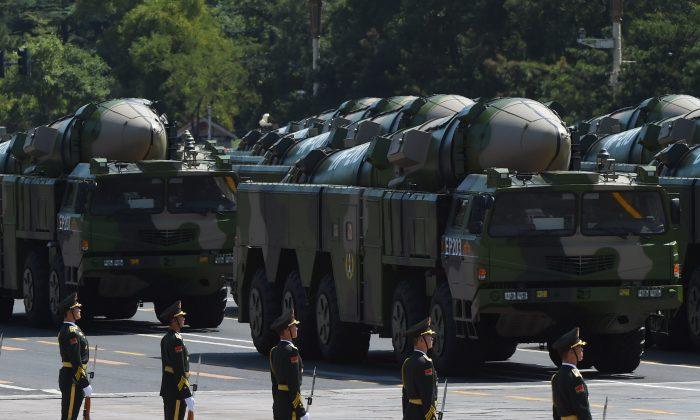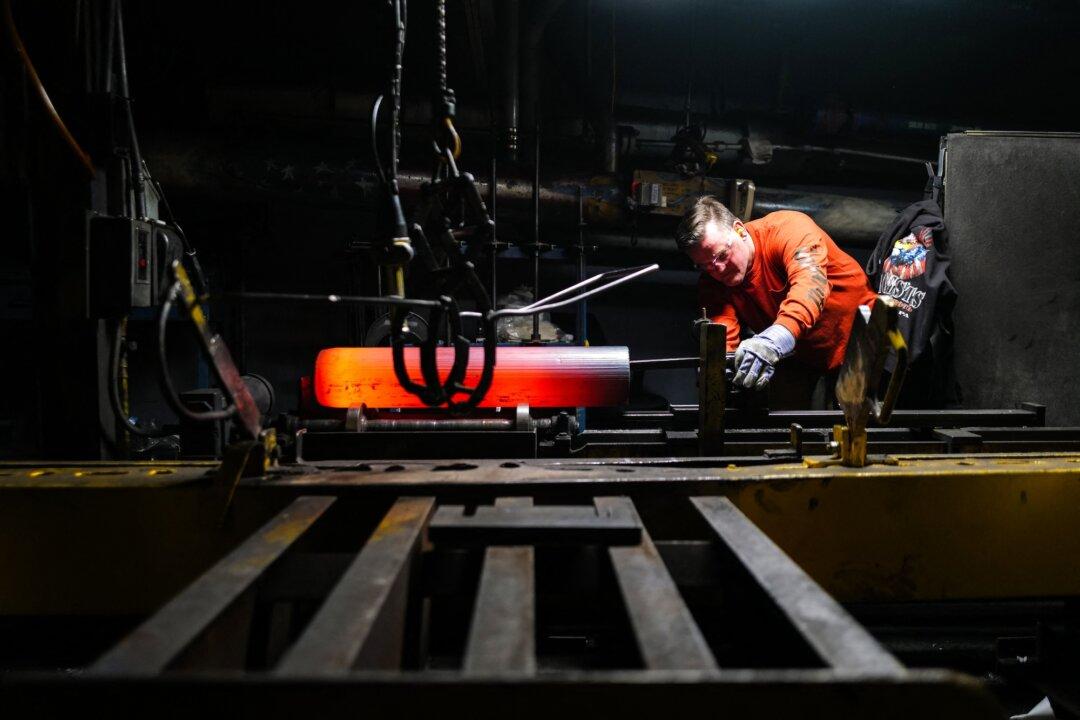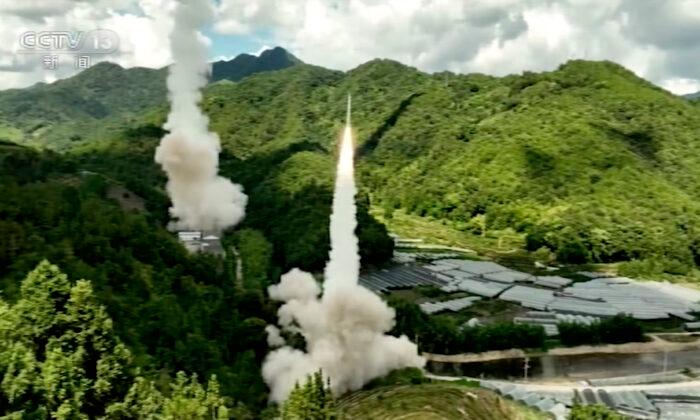This first article in the series “Arms Racing with China” will explore the U.S.-China balance in tactical nuclear weapons. Very little is said publicly by U.S. or Chinese sources regarding China’s tactical nuclear weapons arsenal, but available sources should be considered, as some in the U.S. Congress rise to oppose the Trump administration effort to develop new tactical nuclear weapons for the United States.
It’s almost certain that the Trump administration is going to withdraw the United States from the 1987 Intermediate Nuclear Forces (INF) Treaty with the former Soviet Union, which banned theater-range nuclear ballistic and cruise missiles, and set the stage for significant U.S. post-Cold War tactical nuclear reductions in the 1990s. The main reason for the withdrawal is that Russia is again building theater-range nuclear missiles, while maintaining an estimated 1,000 to 6,000 non-strategic nuclear weapons. But, in addition, not constrained by INF treaty membership, China has built close to 2,000 theater-range missiles, according to U.S. officials.
Most of China’s missiles are known to be dual-capable, able to be armed with nuclear or a variety of non-nuclear warheads. China has never revealed its number of theater or tactical nuclear weapons and may never do so, in accordance with longstanding policies that reject Western-style military transparency. But surprisingly, in 20 years of publication, neither has the Pentagon’s annual congressionally mandated China Military Power Report.
Perhaps the only credible Western estimate regarding China’s tactical nuclear weapons is from a 2012 Russian source. That year, the former chief of staff of the Russian Strategic Rocket Forces, Gen. Victor Esin, published what still stands today as one of the most revealing assessments of China’s nuclear and missile forces. Esin very likely relied on official Russian intelligence sources for his numbers.
Translated by the Northern Virginia-based Potomac Foundation, Esin’s estimates included: 210 warheads for shorter-range missiles such as the 1,500km (932 miles)-range DH-10 ground-launched cruise missiles, the 600km-range DF-15, and the 300km-range DF-11 short-range ballistic missiles (SRBMs). Esin also estimated that 320 tactical nuclear bombs were reserved for strike aircraft and 120 bombs were dedicated to bombers, such as the Xian H-6.
Assuming Esin’s estimates are correct, that would add up to a possible total of 650 tactical nuclear weapons available for China’s People’s Liberation Army (PLA). But the PLA is also nearing deployment of hypersonic missiles, is testing a new medium-range air-launched ballistic missile, has already developed multiple versions of second-generation SRBMs, and is developing a new regional stealth bomber—all of which will increase the credibility of its tactical nuclear forces.
America’s recent record regarding tactical nuclear weapons has been one of steep reductions. According to the Congressional Research Service (CRS), non-strategic U.S. nuclear weapons declined to less than 1,000 in the mid-1990s, from less than 6,000 in the mid-1980s. In the early 1990s, the George W. Bush administration withdrew U.S. tactical nuclear weapons based in Asia, removed tactical nuclear weapons from U.S. Navy warships, and retired all U.S. Army 155mm tactical nuclear artillery shells.
From 2010 to 2013, the Obama administration destroyed the remaining U.S. theater tactical nuclear cruise missiles kept in land storage: the submarine-launched tactical nuclear Tomahawk (TLAM-N). According to the CRS, the United States today has about 500 tactical nuclear bombs, with as many as 200 deployed in Europe and the rest stored stateside. However, these rely on aircraft delivery platforms that today are very vulnerable to Russian and Chinese integrated air defense systems (IADS).
China’s IADS is perhaps the most formidable in the world. Beijing regularly touts its array of modern radar capable of detecting stealth aircraft such as the Lockheed Martin F-35—soon to be the main designated tactical nuclear bomb delivery platform for U.S. and North Atlantic Treaty Organization (NATO) air forces. The PLA is developing a Joint IADS that combines the air defense forces of all its component services.
This year, China’s air force is deploying its most modern and capable Russian-made fourth-generation S-400 surface-to-air-missiles (SAMs). When considering SAM launcher reloads, it’s possible to estimate that the PLA has over 4,000 difficult to jam or evade fourth-generation SAMs in land bases and on warships.
If we take Esin’s estimates, plus the PLA’s advanced IADS, seriously, then the PLA has considerable scope to engage in nuclear coercion or non-strategic nuclear warfare. That undermines the credibility of the United States’ “extended nuclear deterrent,” offered to U.S. allies and friends in Asia to deter Chinese and Russian attack, and to convince allies and friends to forgo their own nuclear weapons.
For example, should North Korea instigate a nuclear crisis on the Korean Peninsula requiring the commitment of most U.S. forces in the region, then China could consider that simply demonstrating tactical nuclear weapons near Taiwan or near U.S. forces based in Japan, it could force U.S. political concessions fatal for Taiwan. U.S. forces may not be able to match a Chinese low-yield tactical nuclear weapon demonstration.
Washington might be reluctant to use strategic nuclear forces that may be needed to scare North Korea, or to deter a combined Chinese-Russian nuclear coercion exercise. Furthermore, China’s advanced air defense networks would be alert to defeating any slow U.S. tactical aircraft armed with nuclear bombs.
China’s lack of transparency regarding its tactical and strategic nuclear weapons, and a potential imbalance in the numbers of U.S. and Chinese tactical nuclear weapons, would appear to justify rearming U.S. Army, Navy, and Air Force units with sufficient new hypersonic, ballistic, and cruise missiles, offering far more confidence in delivering tactical nuclear weapons to deter their use by China.
So far, the Trump administration proposes to build a new nuclear-armed sea-launched cruise missile and the new W-76-2 low-yield tactical nuclear warhead intended for delivery by long-range missiles. These systems and much more are required if the United States is to successfully deter Chinese and Russian aggression that could begin early in the next decade.





